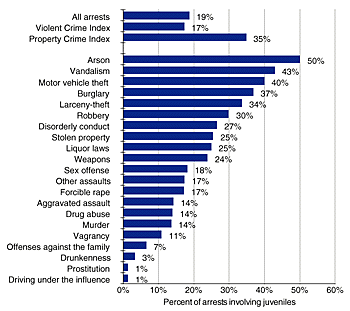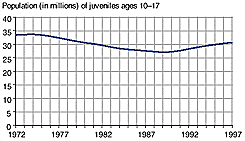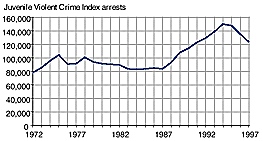|
The juvenile share of the crime problem decreased in 1997 The relative responsibility of juveniles for the U.S. crime problem is hard to determine. Studying the proportion of crimes that are cleared by the arrest of juveniles gives one estimate of the juvenile responsibility for crime. The clearance data in the Crime in the United States series show that the proportion of violent crimes attributed to juveniles has declined in recent years. Juvenile involvement in violent crime grew from 9% or 10% in the early-to-mid-1980's to 14% in 1994. Since 1994, the proportion of violent crimes cleared by juvenile arrest has declined, reaching 12% in 1997. The proportion of murders cleared by juvenile arrests in 1997 (8%) was at its lowest level since 1991, but still above the 5% level of the mid-1980's. The juvenile proportion of cleared forcible rapes peaked in 1995 (15%) and then fell, with the 1997 rate (12%) the lowest in the decade. The juvenile proportion of robbery clearances in 1997 (17%) was below its peak in 1995 (20%), but still far above the levels of the early 1980's (12%). Similarly, the juvenile proportion of aggravated assault clearances in 1997 (12%) was below its peak in 1994 (13%), but still above the levels of the early 1980's (9%). The proportion of Property Crime Index offenses cleared by juvenile arrest in 1997 (23%) was equal to the average level between 1980 and 1996.
| ||||||||||||



